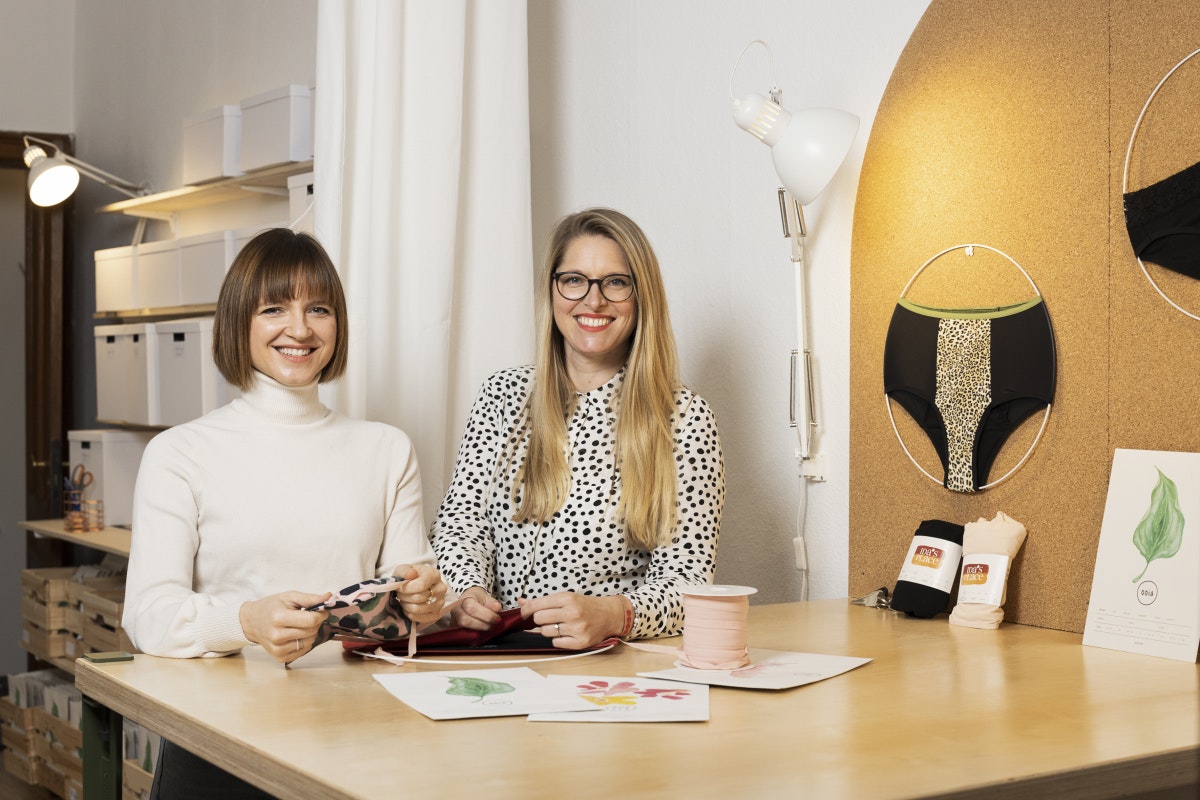How to build a company from your own resources
No time right now?
The unicorn hype reigns supreme in the German startup scene. There are several advantages to bootstrapping a startup at leisure. A founder report.
Wherever you look in the startup press, it is teeming with funding reports. This Hamburg startup has raised ten million, the Berlin startup has just received an investment for an even larger sum. Anyone who founds a startup quickly gets the impression: Only when I have been able to convince investors of my idea will I be on the right track. “In fact, some founders seek funding primarily for their reputation,” says Christoph Behn. “I think that’s nonsense.” The founder of Card making believes in the form of financing bootstrapping. Taking up external capital or growing on your own – one is no better than the other, just different.
“There is no one right way to build a startup,” says Behn when asked about bootstrapping. Bootstrapping is the name given to the financing of a start-up from its own resources without raising external capital. Behn bootstrapped a company himself for eight years: card making. It is very similar with Kati Ernst, the co-founder of Ooia. Both like to talk about this form of corporate finance because it was the right choice for both of them. They know what is important when founders want to pull up a company on their own – and where the pitfalls lie.
Contents
Investment or bootstrapping – which fits?
But how do I, as a founder, know which form of financing is really the right one for my startup? “On the one hand, that is a question of type and of course also depends on the business model and market environment,” says Behn. The main motivation of the successful founder at the time was freedom. The moment investors got into the company, he should have given them up. That’s why bootstrapping was the way to go for him for a number of years. But if you want to become known as a founder as quickly as possible and grow your company as quickly as possible, external financing is helpful.
Christoph Behn bootstrapped his card-making business for years. As a business angel, he now passes on what he has learned in the process. (Photo: Better Ventures)
Kati Ernst, the founder of Ooia, a startup for sustainable period underwear, like Christoph Behn, appreciates the independence of bootstrapping. “We have the freedom to work as we want, and also to do what we want socio-politically,” says the founder. In the case of Ernst and her co-founder, Kristine Zeller, this is actually of value. With their startup for period products, the two entrepreneurs position themselves time and again on feminist topics and thus strengthen their brand. A positioning that many an investor would probably not like.

For Ooia founder Kati Ernst, bootstrapping has been the right path up to now. (Photo: Ooia)
Investors bring expertise – or a limited view
In fact, even for the Ooia founders, it was not a conscious decision to forego investments right from the start. This only took place in the second step. Initially, the founders were looking for investors. With their corporate background, the two of them thought it would make sense to get business angels on board at an early stage. But when Ernst and Zeller noticed how little understanding the mostly male investors could muster for the product of the two – the business-relevant figures were completely disregarded – they decided to keep the development of their company completely in their own hands.
You might also be interested in: Bumble, Femtech and the First Billion: When Women Start Up for Women
Behn and Ernst are two successful examples that B2C startups can be set up with their own resources. But it’s even easier than bootstrapping a B2C company, be it to scale B2B software in this way. “You can get customers in this area and do a project business with them first,” says Behn. This means that money is already in the empty startup coffers and the software solution can be standardized further, entirely according to the lean startup principle.
Bootstrapping requires creativity
When building a B2B SaaS company, bootstrapping is very practical. But how does growth from your own resources work when a startup needs a lot of working capital? The most important thing: “Optimizing cash flow with creative means,” says Behn. So make sure that the startup does not have to permanently make advance payments from its own resources. Possibilities are, for example, to remunerate service providers on a commission basis or to win customers early through crowdfunding. That’s exactly how Ernst did it with Ooia: In order to be able to produce the first panties with the finished product, Ooia started a crowdfunding campaign via Kickstarter. The startup did not have to pay for the first fabric orders itself, the customers made advance payments.
With her start-up, Ernst made use of the principle of advance sales, and has continued to do so even after the very successful Kickstarter campaign. “For the first nine months we were basically always sold out on our website,” says Ernst. The customers have ordered, the delivery could be produced. In this way, the company has managed to grow very quickly in a short period of time without having to take enormous risks.
There are several ways to secure cash flow
In the meantime, the period startup is no longer dependent on advance sales, but can always guarantee that goods are available. The two founders still have a solution up their sleeve that saves them sleepless nights and provides a buffer in the event of a short-term payment bottleneck – even without investors. Ernst and Zeller had their bank approve a current account credit for a high six-figure sum. The two founders have never needed it, but the cash flow is guaranteed.
Time is the most important resource.
So creativity is important; as well as finding the right way to deal with the available money. A certain amount of resilience for uncertain times is also part of it; as well as the will to somehow manage everything on your own during the construction “Time is the most important resource,” says Behn. If there is less of the resource money, the more of the resource time has to be put into building up a company by the founders themselves. Specifically, it can look like Behn himself: To save money, he checked all the orders himself at the beginning of the card-making process and even made some card designs himself – he just couldn’t pay anyone who could have done it for him.
In the end, however, both Ernst and Behn say that it was the right decision to forego external investors for a long time. As a founder you tend to be alone in many situations, but the freedom to build up the company according to your own ideas is priceless.



